Keeping records of your child's learning
Record keeping informs you of your child’s progress and helps you identify areas of the educational program you may need to revise.
Maintaining records throughout the registration period is an important registration requirement. These records will also assist your future planning.
These records may then be used to provide evidence of your child’s progress over time and implementation of your child’s educational program during your assessment with an Authorised Person.
Home schooling parents may use a variety of methods for monitoring progress.
This could include a variety of strategies such as:
- collecting work samples over the registration period
- a record of outcome achievement
- compiling digital evidence of learning activities
- journalling
- the child’s self-reflections
- undertaking external revision and assessments such as NAPLAN or topic review tasks.
There are a variety of ways for parents to demonstrate that their program has been delivered, including:
- annotating work samples to indicate the syllabus content and/or outcomes addressed
- dating, signing and/or commenting on individual aspects of the educational program
- providing a summary and/or overview of their child’s progress over time, areas requiring further coverage and/or areas of advancement.
Work samples
Work samples are one way you can demonstrate that the educational program has been delivered. They can also be very useful to monitor your child’s progress and achievement across the registration period.
Work samples collected throughout the registration period may demonstrate evidence of:
- outcomes addressed
- depth of content knowledge
- how your child can apply the skills and knowledge they have gained
- gaps in your child’s learning and achievement that may need to be addressed further
- the learning gains made by your child over time.
Work samples may also complement the nature of home schooling undertaken as outlined in the educational program through:
- demonstrating the integration of syllabuses
- aligning experience-based learning with NESA syllabuses
- presenting marked and/or annotated examples
- online testing results (such as NAPLAN).
Examples of work samples
This example provides annotation to indicate achievement.
Early Stage 1
Syllabus: Mathematics, forming groups
Activity: Grouping activity
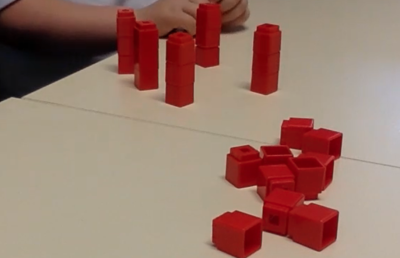
Image taken from Mathematics K-10 syllabus: Early Stage 1 – Teaching advice for Forming groups
Sample evidence of learning - the parent provides photographs of child grouping blocks as identified in the grouping activity.
Parent feedback
I provided <child’s name> with verbal feedback during the activity noting where mistakes were made and providing encouragement to try again until they were correct.
Parent notes on child's progress
Using 20 blocks <child’s name> is able to:
- copy tower sizes by counting blocks
- copy tower sizes by counting blocks
- create towers of different sizes
- create groups of; 2,4,5,10
- create groups of 3,6,7,8 and 9, and identify the number of left over blocks count and
- confirm the total number of blocks in each activity.
This example provides discussion on the use of the word 'went'.
Stage 1
Syllabus: English - spelling and vocabulary

Sample parent feedback to child:
- Written feedback:
A great recount!
Well done on the capital letters and full stops!
Some new words for your word bank:
- yesterday
- beach
- saw
- whales.
You are ready to write and publish.
- Verbal feedback:
Verbal corrections were given when the word was used incorrectly.
This example shows corrected answers on a textbook.
Please note: Working in the textbook does not allow the child to demonstrate working out (Working Mathematically) so opportunities will need to be provided to allow the child to develop and demonstrate this skill.
Stage 2
Syllabus: Mathematics
Syllabus content
- Focus Area: Multiplicative relations B
- Content group: Use number properties to find related multiplication facts

Sample parent feedback provides:
Correct or incorrect answers
Sample parent notes on child’s progress
Further revision needed around multiples of 8.
These examples provides photographic evidence of learning for 2 different syllabus areas.
Stage: Early Stage 1
Syllabus: Personal Development Health and Physical Education (2024)
- Focus area: identity, health and well-being
- Content group: caring for the body improves health and well-being
- Content:
- identify and demonstrate hygiene strategies that promote health and well-being
- identify foods and drinks, including bush food, that contribute to healthy eating habits and well-being.
Activity - preparing a nutritious snack from our recipe book
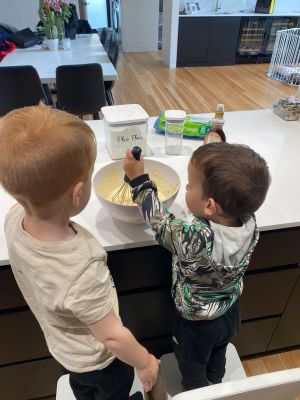
Progress photographs available on our family’s private social media (Facebook) group.
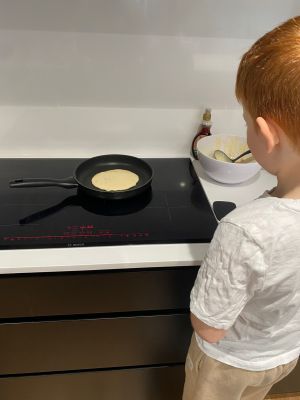
Progress photographs available on our family’s private social media (Facebook) group.
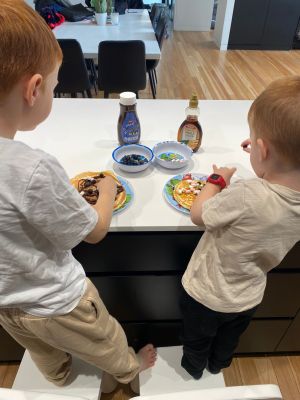
Progress photographs available on our family’s private social media (Facebook) group.
Sample parent feedback
During this activity we discussed:
- the importance of washing hands and keeping a clean benchtop for hygiene and safety in the kitchen
- the options for toppings we might add to our pancakes (eg fruits, syrup, marshmallows) and which items would be healthier for our bodies.
Stage: Early Stage 1
Syllabus: Science and Technology (2024)
- Focus area: observations and questions spark curiosity
- Content group: Living things have characteristics that help them survive in their environment
- Content:
- describe how living things get air, water and energy to survive in their environment
- recognise that plants produce their own food, and animals need to find their food
- examine flowers, fruit, leaves, roots and stems of plants and describe their purpose.
Activity: Early stages of our vegetable garden

Progress photographs available on our family’s private social media (Facebook) group.
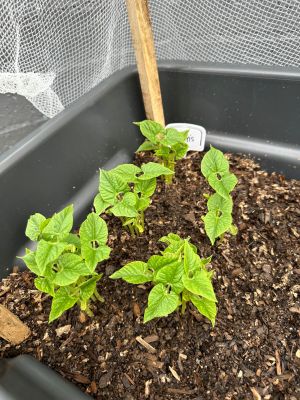
Progress photographs available on our family’s private social media (Facebook) group.

Progress photographs available on our family’s private social media (Facebook) group.
Sample parent notes on child’s learning
My child observed the plants daily and identified:
- weather conditions (temperature and rainfall) and updated our weather chart in the home
- our plants needs such as if our plants required additional watering or sunlight
- the height of plants and measured them each week with assistance
- shape of the leaves and how they change over time taking photographs as evidence.
Sample follow up activity
- I drew an example of each plant and <child’s name> labelled its features.
- <Childs name> then completed a short writing activity on the purpose of flowers, leaves, roots and stems.
Sample parent records of learning and progress
- plant measurements
- labelled diagram
- photographs of plant growth
- writing activity
- I provided <child’s name> with verbal feedback as they completed each activity.